Hello friends~
It’s the best feeling when clients or family members let me know me that they’ve picked up some nugget of strength or nutrition wisdom.
Sometimes they’ll say I inspired them to eat more protein and healthy carbs. Or they might tell me that they lifted a grandchild out of a pack n’ play and they heard my voice in their heads telling them to use breath to support the core and pelvic floor. (Breath is everything!)
As a coach, mom, grandma, sister, and aunt I am so proud and happy to be a good role model.
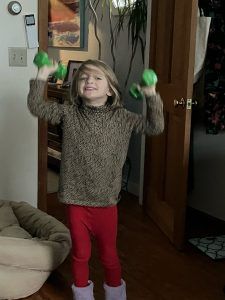
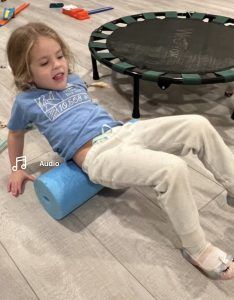
I love photos of granddaughters having fun and getting strong!
We’re all a role models.
We’re all products of the way we grew up, at least partly. My mom grew up during the Depression, and very much aspired to be the type of women she saw and read about in the many women’s magazines she subscribed to through the 50s and into the 80s. Thin was in. I was watching…
I was watching.
I rarely saw my mom sit down to eat with us. Instead she would be standing at the counter, or at the sink washing dishes and pots and pans, then furiously vacuuming the floor afterward with the electric broom.
She cooked for our big family (I am the eldest of 6), made quiche before real men ate it, and she threw big parties serving fancy crepes. At the same time there was a stash of Ho-Hos, Twinkies, and Ding-dongs way back in the cupboard (we found them!), and Good Humor chocolate candy crunch bars in the locked downstairs freezer, where she also kept her amazing Christmas cookies (we found the key!). I learned how to host a good party, and that decadent desserts were something to hide.
I remember her in constant motion, doing poodle kicks on the floor while we all watched Little House On The Prairie, or running up and down the stairs for exercise.
I saw rarely my mom eating, and she was always in motion. I can’t know for sure, but I think that she had an eating disorder.
I was listening.
Adults’ commentary on girls’ bodies will be branded in their brains.
As a little girl I heard myself referred to as healthy, sturdy, solid, and chunky. I hated when an adult said “you’re getting so big!”. At the age of 5, as our little embroidered dresses blew in the breeze on the swings, my friend’s mom said that she wished that “Sandra’s underpants fit like Polli’s”.
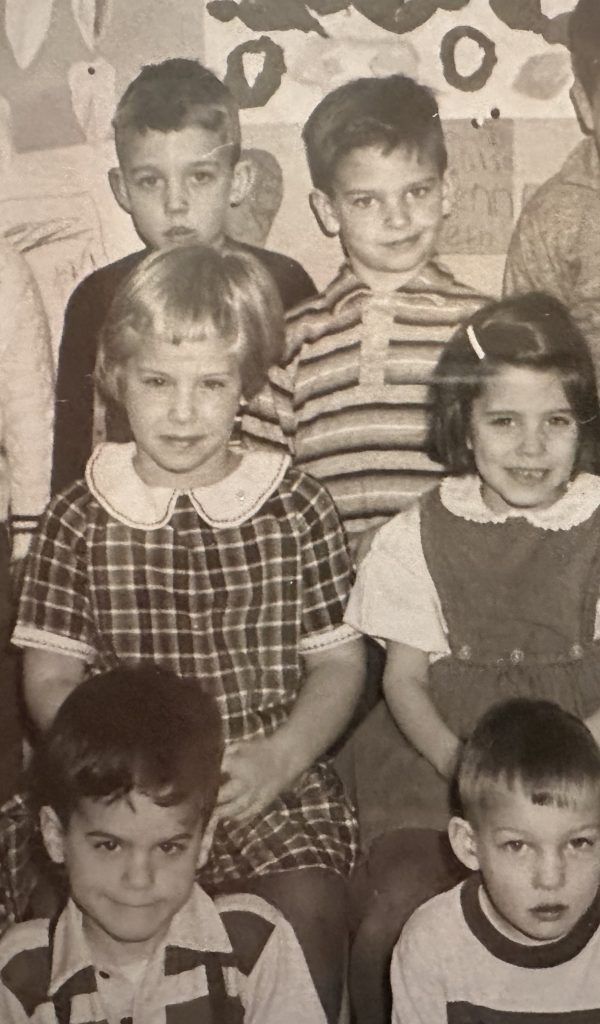
When I was around 10, my mom bought me a slip with the label “Chubette”. I cried. I’m pretty sure that she was trying to tell me she wanted me to be slimmer, but she kindly returned the slip.
The elastic legged gymsuit in middle school cut into my thighs, and I wished desperately that my legs would look like Gail’s with her knobby knees.
When I was 11 our housekeeper called me a ‘brick shit house”.
I had no idea what a brick shit house was but it didn’t sound nice. Twiggy was an ideal. The President’s Physical Fitness test was a horrific embarrassment, as were the yearly school physicals, where they read kids’ weights out loud. OI started my period at 11, and hated my hips.
The seeds of an eating disorder had been planted.
When I was 14 (1967) I gave up food for Lent.
I actually did that. I saw pounds drop off on the scale daily and felt empowered. I loved the growls in my tummy. In a typical day I ate one egg with ketchup or sucked on a DumDum lollipop. I threw away school lunch, and I felt in control, and weirdly elated. I began running miles in my neighborhood in my cutoffs and Keds, and did hundreds of jumping jacks in my bedroom.
I lost 20 lbs in 40 days.
My mom was sewing an Easter outfit for me and had to keep taking it in, but she didn’t say a word. I believe that she was happy for me. I think I was living up to her idea of what her daughter should look like – and in a way she may have been living through me.
I had knobby knees for the only time in my life, and my period stopped for about 6 months. Luckily at my first full physical exam at 15 the doctor prescribed a healthy diet because of “muscle deterioration”. He didn’t mention a diagnosis of anorexia then, but I know now that was where I was headed.
My mom said nothing, but I felt validated by that doctor. I remember feeling that I had achieved a goal – I didn’t have a way to name it but I felt finally in control. I started eating again, hyper-focused on calories … but eating again, thank goodness.
There were no resources then, but there are now. Here’s the NATIONAL EATING DISORDERS ASSOCIATION if you know of anyone needing help.
The voices in my head…
The women in my mom’s circle told me they were advised not to gain more than 18 lbs during pregnancy.
Those voices were in my head during my first few pregnancies, so I got on the scale every day, sometimes more than once, hyper-vigilant about the rising weight. I knew that nutrition was critical to my health and the health of my babies, so I learned to ignore the scale.
I learned that balanced nutrition and effective exercise are the keys to mental and physical health.
And I’ve learned that those “big” legs and arms are really strong, and have enabled me to do things I could never have imagined doing.
Young women and girls, women going through pregnancy, postpartum, menopause and beyond – we’re in this together.
I am blessed with 6 healthy, strong, married kids – 2 daughters, their husbands, 4 daughters-in-law, 8 granddaughters among my 13 grandkids (so far!), and 6 nieces. They all enjoy good food, and they lead healthy, active lives.
I miss my mom’s energy, brains, style, and commitment to our family. I wish we could talk today.
A conversation with my daughter (mom of two little girls) lifted my heart recently – she told me that it means so much to her now, as a mom herself, that I always modeled body positivity. I know that I made plenty of parenting mistakes, so hearing this made my heart soar. I don’t think there is is anything as sweet for a mom as validation from an adult kid.
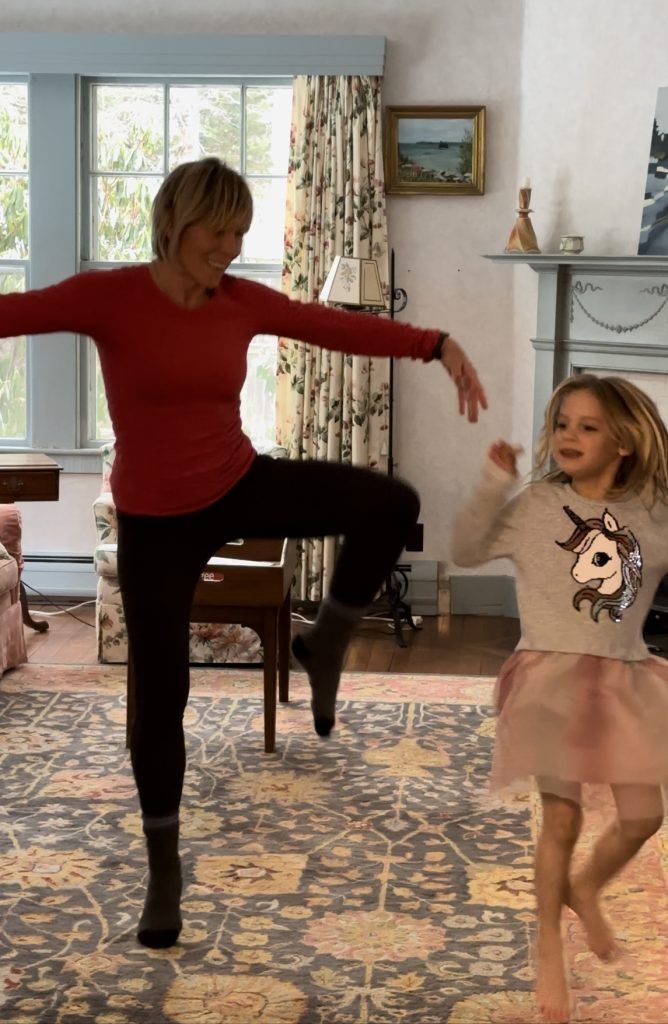
Here’s how you can be a great role model:
- Instead of modeling how to shrink our bodies with deprivational diets and excessive cardio, we can demonstrate how to love ourselves with food that nourishes, and how to build a foundation for strength.
- We can demonstrate the benefits of of strength training and overall wellness for the girls and women among us.
- We can focus on what our bodies can do instead of how we look.
- We can focus on body positivity self-acceptance and banish negative self talk.
This is for you:
We Can Do Hard Things is my favorite podcast, and this episode about body positivity with Sonya Renee Taylor – author of The Body is Not an Apology is so worth a listen.
Onward~
Polli
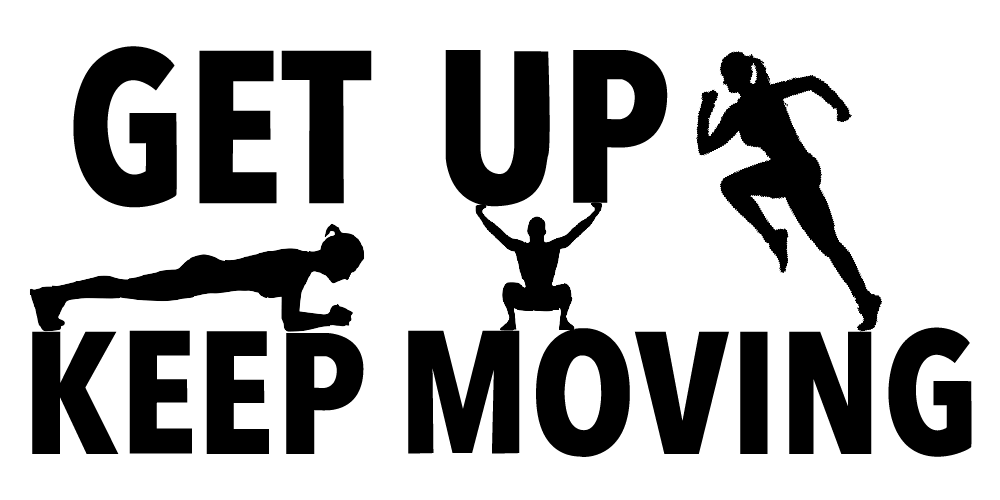




One Response